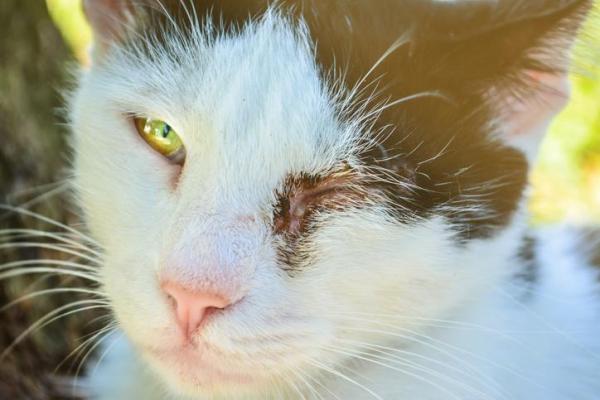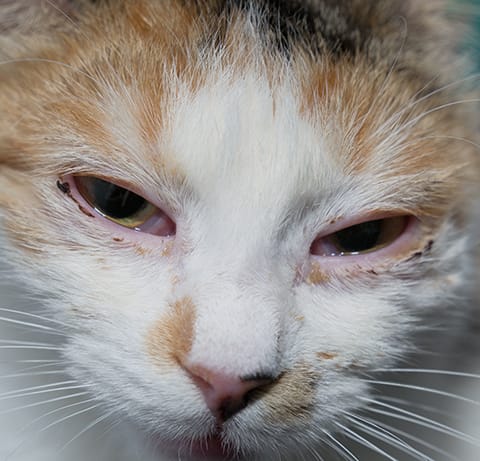Is Cat Eye Infection Contagious to Humans?

Cat eye infections are a common problem that many pet owners face. One question that often arises is whether Cat eye infection is contagious to humans. In this article, we will explore the topic in detail to help you better understand the risks associated with cat eye infections and their impact on human health.
What is a Cat Eye Infection?
A cat eye infection occurs when a foreign substance or bacteria enters the eye, causing inflammation and discomfort. Symptoms of an eye infection in cats include discharge from the eye, redness, swelling, and squinting. Conjunctivitis, which is the inflammation of the conjunctiva, is a common type of cat eye infection.
If left untreated, a cat eye infection can lead to serious complications, such as vision loss or even blindness. It is essential to seek veterinary attention promptly if you suspect that your cat has an eye infection.

Is Cat Eye Infection Contagious to Humans?
Cat eye infections are not (directly) contagious to humans. Most eye infections in cats are caused by viruses or bacteria that are species-specific and cannot infect humans. The viruses that commonly cause cat eye infections, such as FHV-1 and calicivirus, are not known to affect humans.
Although it’s rare, there have been some reported cases of humans developing follicular conjunctivitis. This is a condition that causes inflammation of the conjunctiva, after exposure to infected cats. Conjunctivitis is usually a mild and self-limiting condition, but in some cases, it can be severe and require medical treatment.
It’s important to maintain good hygiene practices when caring for an infected cat. To remain safe, it’s recommended to always wash your hands after handling an infected cat or any items that may have come into contact with their eyes. It is also recommended to avoid close contact with the infected cat (especially the eye fluids).
If you experience any symptoms of conjunctivitis, such as redness, swelling, or discharge, seek medical attention immediately. While the chances are very unlikely, there is also that small possibility that you should not entirely rule out.
Keeping a Cat with Eye Infection with Other Cats
If one of your cats has an eye infection, it’s essential to take precautions to prevent the spread of the infection to other cats. Eye infections can be contagious among cats, so it’s best to separate the infected cat from other cats in the household until the infection has cleared up.
You can isolate the cat in a separate room with food, water, and a litter box. Make sure to wash your hands thoroughly after handling the infected cat to prevent the spread of infection.
It’s important to note that the decision to keep an infected cat with other cats should be made in consultation with your veterinarian. They can help you determine the best course of action based on the type and severity of the infection and the living situation of your cats. In some cases, your vet may recommend keeping the infected cat isolated until the infection has cleared up to prevent the spread of infection to other cats in the household.
It’s crucial to monitor all your cats closely for any signs of an eye infection, such as redness, discharge, and squinting. If you notice any symptoms, take your cat to the veterinarian for an examination and treatment.

How to Prevent Cat Eye Infections?
Prevention is key when it comes to cat eye infections. You can take several steps to reduce the risk of your cat developing an eye infection, including:
- Keep your cat’s environment clean and free of debris that could cause irritation.
- Regularly check your cat’s eyes for signs of infection or other issues.
- Provide a healthy diet and plenty of clean water to keep your cat’s immune system strong.
- Avoid exposing your cat to other cats that may be sick or have eye infections.
What to Do If Your Cat Has an Eye Infection?
If you suspect that your cat has an eye infection, it is essential to take them to the veterinarian as soon as possible. Ignoring the issue can lead to further complications and potential vision loss for your furry friend.
Once at the veterinarian’s office, they will conduct a thorough examination of your cat’s eyes to determine the cause of the infection. This may involve taking a sample of the discharge from your cat’s eye for testing to identify the type of bacteria present.
Based on the results of the examination, your veterinarian will prescribe the appropriate treatment, which may include antibiotic ointments, eye drops, or oral medications. It is crucial to follow the veterinarian’s instructions and administer the prescribed medication as directed. Failure to do so may cause the infection to worsen or lead to a recurrence.
In addition to medication, your veterinarian may also recommend cleaning your cat’s eyes with a warm, damp cloth or saline solution to remove any discharge and soothe any discomfort. It is important to monitor your cat’s condition closely and report any changes or worsening symptoms to your veterinarian immediately.
With prompt and proper treatment, most cat eye infections can be treated successfully, and your cat can make a full recovery.
Conclusion
In summary, cat eye infections are generally not contagious to humans. However, it’s important to practice good hygiene and take precautions to reduce the risk of transmission. If your cat does develop an eye infection, seek veterinary care right away to ensure that they receive the appropriate treatment. By following these tips, you can help keep your cat healthy and prevent the spread of infection.


